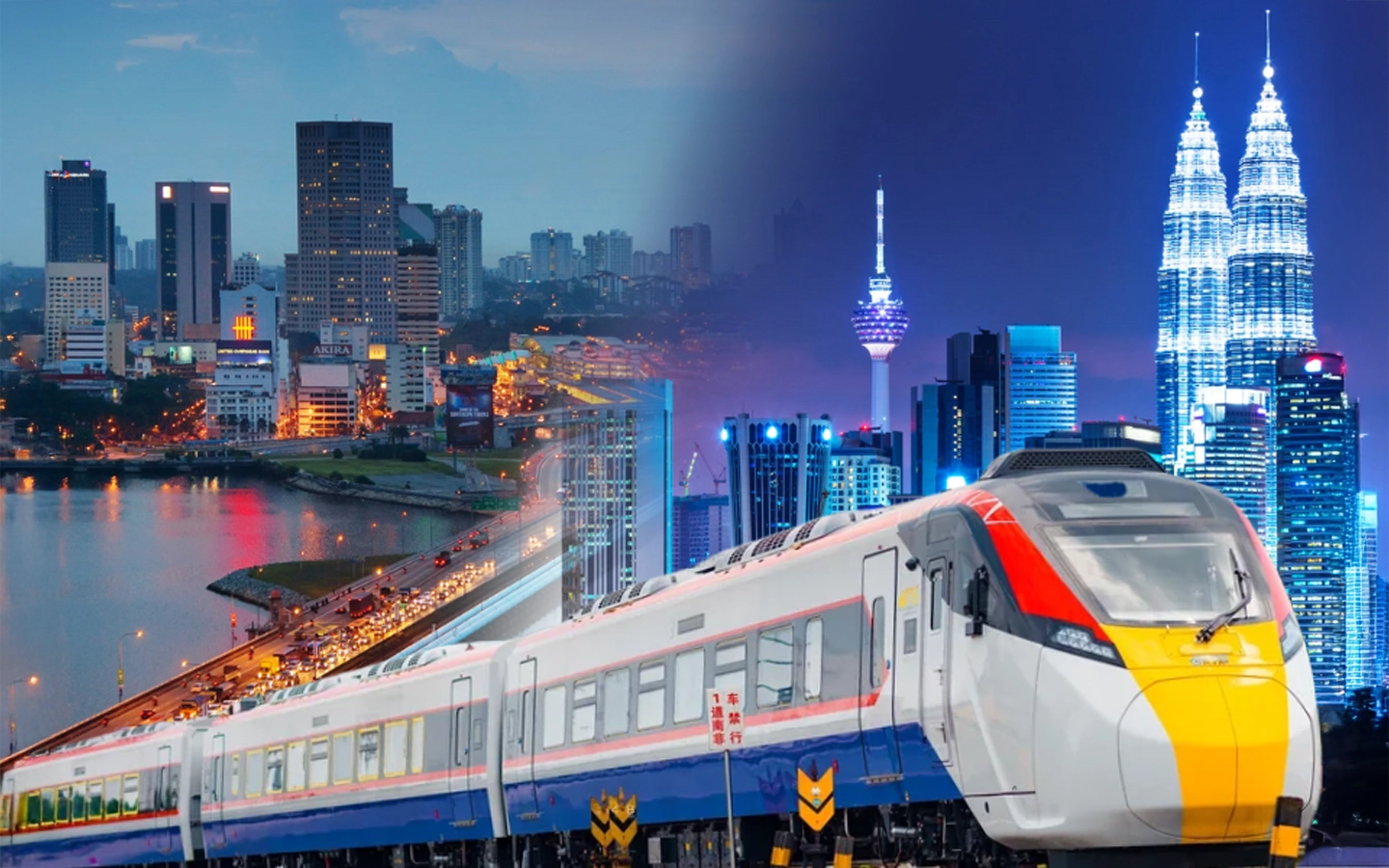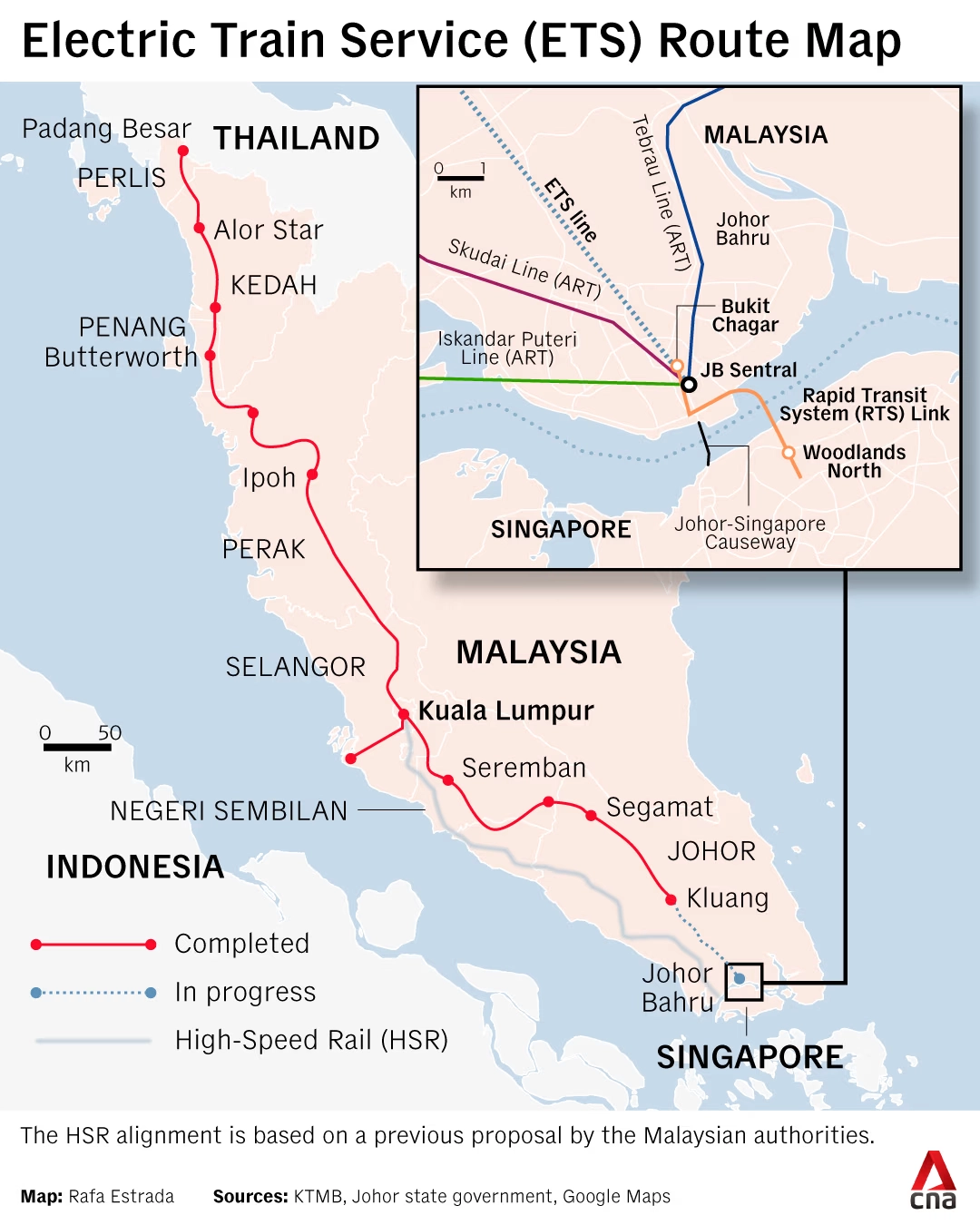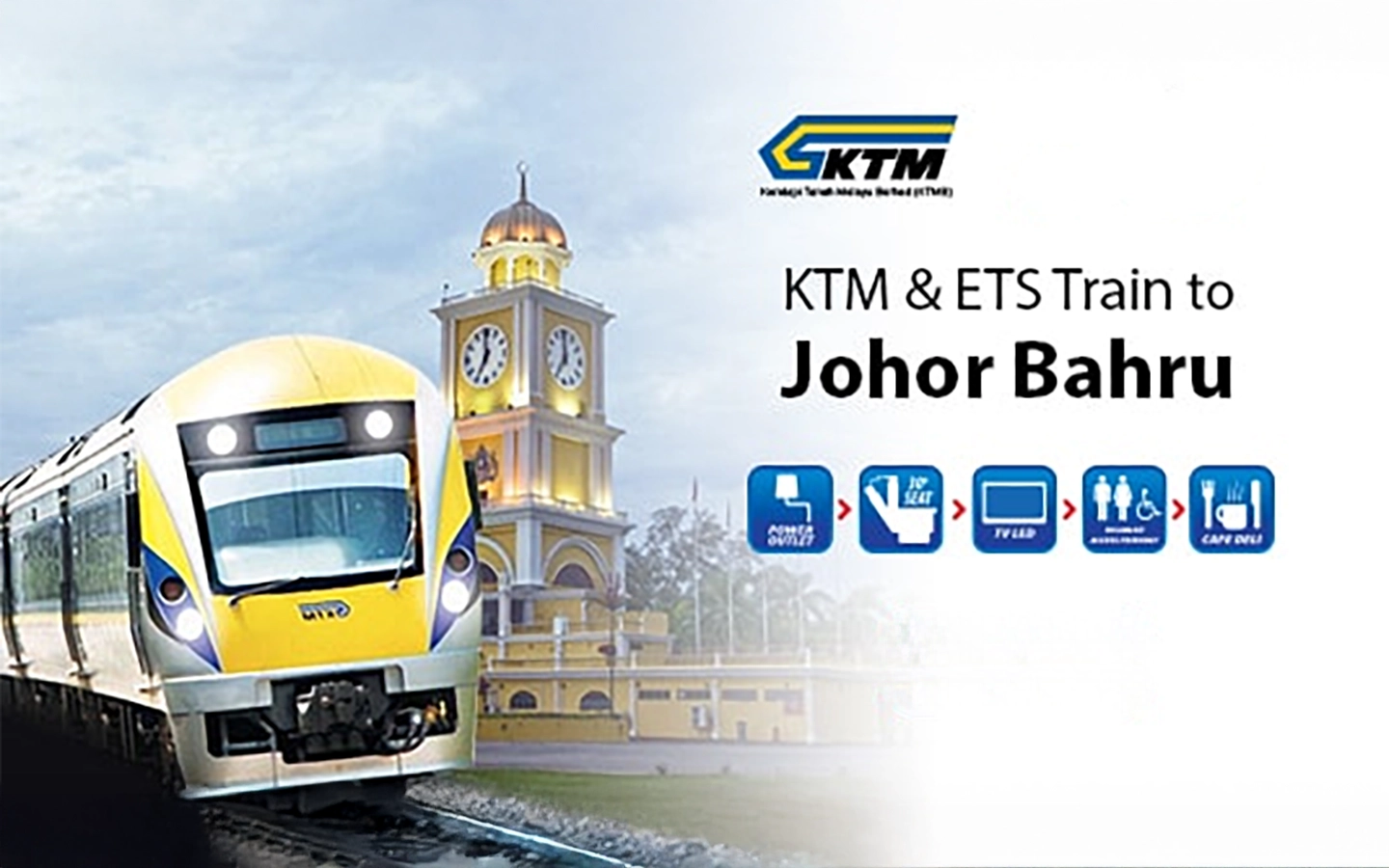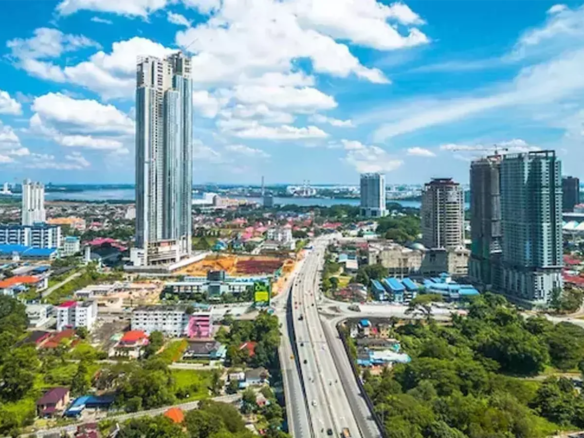Travel across Peninsular Malaysia, particularly between Johor Bahru in the south and Kuala Lumpur in the center, is set for a transformative change with the upcoming Electric Train Service (ETS) extension to JB. Expected to be fully operational by the end of 2025, this infrastructure project represents a major milestone in Malaysia’s rail development, promising faster travel, greater connectivity, economic growth, and environmental benefits. This detailed blog post explores the 10 key things you need to know about this important rail extension.
Table of Contents

1. Revolutionary Time Savings for Travelers
One of the most talked-about features of the ETS extension to JB is the massive reduction in rail travel time between Johor Bahru and Kuala Lumpur. Currently, diesel-powered trains take about 7 hours to cover this route. The new electric trains will complete the journey in approximately 3.5 to 4.5 hours—roughly half the previous duration. This faster transit makes rail competitive with road travel by car or bus; however, it has the added advantage of reliability since it is unaffected by traffic congestion on highways. The efficiency gain opens up convenient day trips and frequent travel options that were previously impractical for many commuters and visitors.
2. Completing Malaysia’s West Coast Electrified Railway Network
The ETS extension from Gemas to JB Sentral closes the last gap in Malaysia’s west coast electric railway network, which has been under development for over a decade. The RM9.5 billion (US$2.25 billion) project began in 2017 and involves electrification and double tracking of the 192 km rail line between Gemas and Johor Bahru. Now trains can run reliably at speeds of up to 160 km/h, providing smoother, faster journeys and increased capacity. This infrastructure upgrade modernizes the southern rail corridor to the same standards enjoyed in the north, completing a consistent, high-performance rail link along the peninsula’s west coast.

3. Phased Rollout with Final Completion by End-2025
The ETS southern extension has been launched in phases. The segment between Gemas and Segamat opened earlier this year. The next stretch from Segamat to Kluang became operational in August 2025. The final phase, extending the service from Kluang to the bustling Johor Bahru Sentral station, is expected to be ready before December 2025 ends. This phased approach ensures progressive benefits while key finishing works like signalling and catenary (overhead electric wires) installation are completed safely and thoroughly. Despite some concerns over past construction delays, the national rail operator KTM remains confident in meeting the 2025 deadline.
4. A Greener and More Economical Travel Choice
The new electric trains represent a cleaner, more sustainable transportation option. They replace older diesel locomotives, which produce higher emissions and are less energy efficient. The use of electrification reduces carbon footprint and noise pollution compared to cars or planes. Moreover, traveling by ETS is generally cheaper than flying and more time-saving than driving in heavy traffic, especially during peak hours or holiday seasons. These financial and environmental benefits make the ETS attractive to a wide range of travelers including daily commuters, tourists, and business travelers.
5. Multiple Service Classes Cater to Diverse Needs
The ETS trains operating on this southern extension will provide a mix of classes including silver, gold, platinum, and express services. Each class offers different levels of comfort and amenities, allowing passengers to choose services that fit their budget and preference. Expect comfortable reclining seats, onboard Wi-Fi access, USB charging points, clean washrooms, and generous luggage storage. Up to 22 train trips are planned daily to accommodate high passenger demand and allow flexible schedules.
6. Integration with Johor Bahru-Singapore Rapid Transit System (RTS) Link
This ETS extension complements the upcoming Johor Bahru-Singapore RTS Link, which is expected to start operations around the same time. The RTS Link will enable seamless immigration and customs clearance between Singapore and Johor Bahru, with a quick five-minute transit across the Johor Strait. Passengers arriving in JB Sentral can then transfer to the ETS to travel northwards to Kuala Lumpur and beyond, creating a fast, efficient, and integrated regional rail network for Singapore and Malaysia. This connectivity will enhance business, tourism, and social ties between the two countries.
7. Boost to Local Economies and Real Estate Markets
Improved rail connectivity tends to stimulate economic growth and property development. Towns along the route such as Segamat, Kluang, and Kulai are already seeing heightened interest from investors and developers anticipating greater accessibility. Hospitality, retail, and service sectors stand to benefit from increased tourist arrivals and commuter flows facilitated by the ETS. The project also raises Johor Bahru’s profile as a major transportation hub, which can attract more businesses and jobs to the area.
8. High Capacity with Advanced Infrastructure
Each ETS train can carry about 346 passengers per trip, and multiple trips daily means thousands of people can be transported efficiently along the southern corridor. The rail line features modern double tracking and electrification, enabling trains to travel at consistent speeds up to 160 km/h. This ensures punctuality, safety, and comfort for passengers. Infrastructure upgrades also include improved signalling systems, station enhancements, and integration with other transport modes such as buses and taxis for seamless door-to-door travel.
9. Commitment to Safety and Reliability
While the extension has faced challenges including some delays, KTM and the Ministry of Transport have emphasized the importance of safety and thorough testing before public operation. Final commissioning includes detailed inspection of track quality, electrical supply, signalling, and on-board systems to prevent breakdowns or safety incidents. Lessons from previous rail projects like the KLIA aerotrain have informed improvements to software and hardware resilience. The goal is to provide a reliable, hassle-free service that passengers can trust for daily commuting or long-distance travel.
10. Transformative Impact on Malaysia’s Rail Landscape
The ETS extension to Johor Bahru is more than just a transportation upgrade; it is part of Malaysia’s vision for a modern, integrated, and sustainable rail network that connects cities, states, and countries. By linking JB with Kuala Lumpur and other northern cities, and connecting to Singapore via RTS, it creates new possibilities for mobility, commerce, and cultural exchange. It marks a new era of southern travel in Peninsular Malaysia, with opportunities for regional economic integration and inclusive development.
Conclusion
The ETS extension to Johor Bahru is a landmark project with far-reaching benefits. It slashes travel time between key cities, promotes environmentally friendly transport, stimulates the economy, and enhances regional connectivity. Expected to be fully operational by the end of 2025, it will transform Johor Bahru into a crucial rail hub and make Malaysia’s rail network more efficient and attractive. For daily commuters, tourists, and investors alike, the ETS extension opens exciting new opportunities for travel and growth in southern Peninsular Malaysia.
Share this article:





Join The Discussion